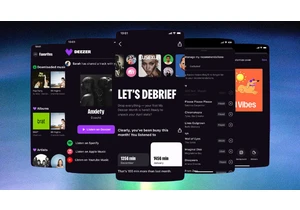Does your company have a compliance checklist for making your digital product accessible? Likely. But in so many cases, these are mostly a cop out.
Big enterprises often see reaching compliance as an end goal vs. a process. They outsource it, automate it, and hire specialists. Or, increasingly, they invest in “regtech“—digital tools that help them stay compliant and avoid penalties. But if you don’t actually have the in-house machinery, it’s all a bit empty.
Companies will have a compliance checklist to ensure their product and content meet website accessibility guidelines, Americans with Disabilities Act (ADA) requirements, and more. But what that checklist doesn’t include are “details” like building an actual culture and principles of inclusion, or asking people with disabilities directly for their input. It doesn’t create an inclusive methodology as much as they tell you how to get to the finish line. But if you were to look back after crossing that tape, you’d see you haven’t actually built a system that can sustain continued growth along that inclusive path—one that nurtures the real business-product-team advantages of integrating diversity into your organization.
So, I both hate and love to break it to you, but you’re not inclusive just for meeting accessibility compliance. To do that, you have to embrace what compliance was meant for in the first place.
It’s about the journey, not the finish line
Accessibility compliance is often just the bare minimum you can put out the gate, but it’s not the best you can do. If your company finds itself patching your product to reach ADA compliance after rolling it out, it essentially means the original system was built to exclude. And look, there’s nothing to shy away from. The majority of the companies on the internet fall into that bucket. But you can only really change that with a continuously evolving process for inclusion. One that will infiltrate every aspect of the system and, hopefully, redefine it so no one is left out.
Creating a well-oiled inclusive system will get you to long-term, sustained compliance quicker. It will also elevate all of your internal processes, getting you the most ROI from your compliance journey, which will cost a company over $5 million on average. Not to mention the returns you’ll get from actually creating a product that’s accessible to all.
Now ask yourself: Is your accessibility process separate from the whole? Are you outsourcing inclusion or assigning accessibility to a single department, or are you fully integrating it into your organization and product, to the point that people with or without disabilities can interact with your brand and core product with the same ease and delight? That would mean having long-term accessibility goals that generate impact across the company.
If just pushed to the periphery, those existing exclusions will continue to play out.
Have both a compliance and an inclusion checklist
It’s easier to be inclusive when you are still building your company from scratch. Think about how you’d go about doing that if you were back at zero: You’d harness the best tools, put together a diverse team, and infuse an inclusive mentality throughout your organization so it’s top of mind—from product to HR.
You can’t inject those changes across an established organization all at once. Build out a process into the workflow of a few teams at a time, then expand. Assign lists and responsibilities to each member of the team, not just the “compliance person.” Use collaborative tools where team members can exchange feedback on best practices.
To illustrate the different approaches, here’s what a simple “compliance” checklist might include:
- Check the app for contrast issues.
- Make sure the website is keyboard-accessible.
- Have hiring practices that include people with disabilities and from marginalized backgrounds.
An inclusion checklist would go deeper to include:
- Identify what inclusion means for your company and user base, and who it’s meant to serve.
- Establish an inclusion philosophy that actually permeates all teams and guides the way you build and make decisions.
- Start a conversation with a community of people with disabilities and get their views on every single touchpoint with your product.
- Consider your use of language across your platforms; whether diversity is represented in your illustrations, and more.
While it’s important to have an area of the company that oversees this transformation, it is crucial that the process extends to all teams and aspects of your company. Creating an inclusive culture means that the product team is just as conscious of the need for screen readers, as the editorial team is to not use language that excludes people with physical or mental disabilities.
Emulation vs. representation
It’s easy to say “I don’t see color” or “I don’t see disability.” But the problem is, you do need to see it. If you don’t see people for how they experience life, then you aren’t acknowledging the problems they might be facing if they’re different from yours.
That’s the difference between emulating a problem (albeit with potentially good intentions), and representing a problem. The latter comes pretty much exclusive with lived experience. When you emulate a problem, you’re also emulating a solution. When people with lived experience are involved, they don’t try to craft a solution, they just do.
Here’s one example we recently saw here at Stark. Last year, we brought on a communication designer, Pooja Jadav, who is a person of color from India. Before she joined, we were quite proud of our illustrations at Stark. We consciously represented people and the realities of having diverse backgrounds and abilities. But when Pooja took the reins, our brand representation changed significantly, even though we hadn’t realized how much it needed to. The illustrations weren’t consciously being ideated to ensure they were diverse enough. There’s further proof that nothing can replace representation and the positive ripple effect that has.
So, rather than just tweaking the outcomes, focus on having a team and a community of users who can guide you there, and continue to improve on those outcomes with time.
Having inclusion as your compass as you embark on this journey might seem more daunting at first, but it’s the only sustainable option—to not do so will see your company try to patch up the same issues time and time again. Compliance is a benchmark, not a cheat to get out of the deep changes the business world needs to enact to stop excluding people from its systems.
Cat Noone is CEO and cofounder of Stark, a startup on a mission to streamline accessibility compliance, saving teams time, money, and effort through end-to-end collaboration.
Login to add comment
Other posts in this group

If real Easter eggs aren’t your thing this weekend, you may find hunting for digital ones more enjoyable. And there are some cool ones to find at your fingertips, provided you have an iPhone or Ma

With music streaming, users have gotten used to being at the mercy of algorithms. But French music streamer Deezer is making it easier for its subscribers to make the algorithm work for them.

Trying to get from point A to point B? If only it were that simple! With any manner of travel these days, you’ve got options: planes, trains, buses, ferries, and beyond. And finding the best

When Twitter cofounder and Medium founder Evan “Ev” Williams was planning his 50th birthday party, he didn’t know who to invite. Having spent more of his life building and scaling tech

If you thought you’d heard the last of the viral “Apple” dance, think again. The TikToker behind it is now suing Roblox over its unauthorized use.
Last year, during the height of Brat su

A Wall Street Journal report this week gave an extensive look into how Elon Musk, the

Netflix fared better than analysts anticipated during the first thr
